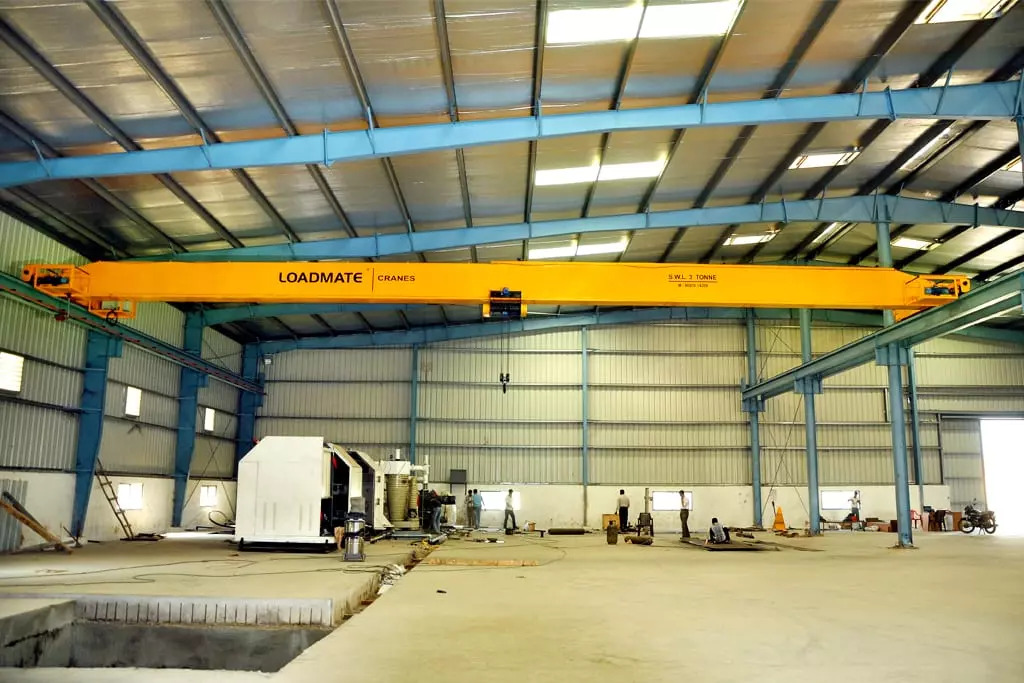Introduction
As manufacturing processes continue to evolve under the influence of automation and smart technologies, the role of material handling systems has become more strategic than ever. Among these, Electric Overhead Traveling (EOT) Cranes are proving indispensable—not just for lifting and moving heavy loads, but for optimizing workflow, improving safety, and reducing operational downtime.
This article explores how EOT cranes support smart manufacturing, what technologies are transforming their utility, and why they’re crucial for the factories of tomorrow.
Understanding the Modern EOT Crane
EOT cranes are electrically powered overhead cranes mounted on parallel runways. They consist of:
-
Bridge Girders (single or double)
-
Trolley with Hoist for vertical movement
-
End Carriages to move across the bay
What once was a mechanical-only system is now integrated with smart sensors, automated controls, and digital monitoring capabilities. Industries that implement advanced cranes—like those engineered by LOADMATE INDUSTRIES PRIVATE LIMITED—benefit from enhanced productivity and safer operations.
Smart Features Enhancing Crane Performance
The transition to smart factories has brought new capabilities to traditional cranes. Here are key features making EOT cranes smarter and more efficient:
-
Remote Operation and Diagnostics
Operators can control the crane wirelessly, reducing human exposure to hazardous zones. -
Real-Time Load Monitoring
Digital displays show load weights, improving safety and reducing overloading incidents. -
Integrated Control Systems
Programmable Logic Controllers (PLCs) allow precise movements and seamless integration into manufacturing execution systems (MES). -
Predictive Maintenance
Embedded sensors detect component wear and alert teams before breakdowns occur.
Use Cases Across Industries
EOT cranes are now widely used in:
-
Power Plants: For turbine maintenance and generator handling
-
Steel and Foundry: Transporting molten metal or heavy coils
-
Logistics and Warehousing: Managing high-volume inventory
-
Aerospace: Positioning precision components
-
Textile & Packaging: Handling bulk rolls and packaging pallets
Each application may require customizations in speed, span, and lifting capacity—services commonly offered by experienced manufacturers like LOADMATE INDUSTRIES PRIVATE LIMITED.
Boosting ROI with Smart Material Handling
Companies often focus on high-tech production machinery but overlook the productivity gains from smarter handling systems. EOT cranes:
-
Reduce cycle time in assembly and logistics
-
Improve space utilization by maximizing vertical clearance
-
Minimize product damage through precision control
-
Lower labor costs and accident rates
For businesses seeking cost-effective factory automation, intelligent cranes are an underrated investment.
Important Selection Criteria
Choosing the right EOT crane requires evaluating:
-
Lifting Load and Frequency
-
Headroom and Bay Dimensions
-
Crane Speed and Duty Class
-
Environment (dust, temperature, corrosives)
-
Required Level of Automation
Careful selection ensures a longer operational life, easier maintenance, and better integration into your production system.
Challenges to Address
Even with the benefits, adopting Best EOT Cranes comes with some hurdles:
-
Training: Operators must be trained for new control interfaces.
-
Cost of Upgrades: Retrofitting existing systems with automation features can be capital-intensive.
-
Maintenance Planning: Smart features require regular software updates and sensor calibration.
These challenges can be mitigated by working with solution providers offering complete lifecycle support—from design to after-sales service.
The Future: Cranes in Industry 4.0
Looking ahead, we’re seeing advancements like:
-
Digital Twin Technology: Simulating crane performance in virtual models
-
AI-Based Load Distribution: Optimizing movement based on weight, angle, and balance
-
Voice-Controlled Operations: Hands-free crane commands for precision tasks
-
5G Connectivity: Real-time data exchange between cranes and ERP systems
These innovations will make cranes fully autonomous assets in smart factories.
Conclusion
EOT cranes are more than lifting machines—they’re intelligent tools that enhance factory operations, support lean workflows, and align with the goals of Industry 4.0. Their integration into modern manufacturing is no longer optional; it’s strategic.
Organizations that leverage smart crane systems—like those developed by LOADMATE INDUSTRIES PRIVATE LIMITED—can gain a significant edge in productivity, safety, and operational efficiency.
Author Bio:
Saurav Rabari is the Chief Marketing Officer at LOADMATE INDUSTRIES PRIVATE LIMITED, where he leads strategy and education around industrial automation and material handling systems. He specializes in bridging engineering innovation with real-world factory needs.


